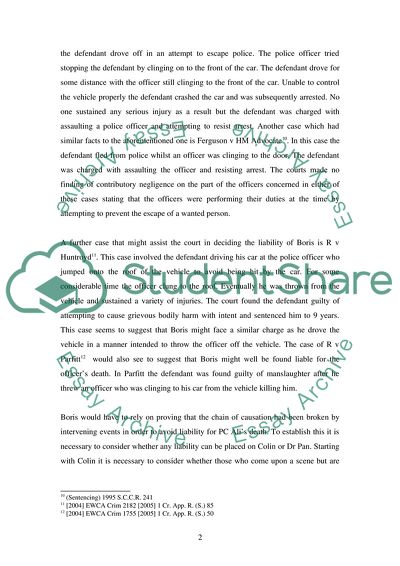Cite this document
(Analysis of the Criminal Law Case Study Example | Topics and Well Written Essays - 1500 words, n.d.)
Analysis of the Criminal Law Case Study Example | Topics and Well Written Essays - 1500 words. https://studentshare.org/law/1707068-boris-was-wanted-by-the-police-for-a-serious-crime-pc-ali-saw-boris-sitting-in-his-car-by-the-side-of-a-busy-road-one-day-pc-ali-hammered-on-the-passenger-w
Analysis of the Criminal Law Case Study Example | Topics and Well Written Essays - 1500 words. https://studentshare.org/law/1707068-boris-was-wanted-by-the-police-for-a-serious-crime-pc-ali-saw-boris-sitting-in-his-car-by-the-side-of-a-busy-road-one-day-pc-ali-hammered-on-the-passenger-w
(Analysis of the Criminal Law Case Study Example | Topics and Well Written Essays - 1500 Words)
Analysis of the Criminal Law Case Study Example | Topics and Well Written Essays - 1500 Words. https://studentshare.org/law/1707068-boris-was-wanted-by-the-police-for-a-serious-crime-pc-ali-saw-boris-sitting-in-his-car-by-the-side-of-a-busy-road-one-day-pc-ali-hammered-on-the-passenger-w.
Analysis of the Criminal Law Case Study Example | Topics and Well Written Essays - 1500 Words. https://studentshare.org/law/1707068-boris-was-wanted-by-the-police-for-a-serious-crime-pc-ali-saw-boris-sitting-in-his-car-by-the-side-of-a-busy-road-one-day-pc-ali-hammered-on-the-passenger-w.
“Analysis of the Criminal Law Case Study Example | Topics and Well Written Essays - 1500 Words”. https://studentshare.org/law/1707068-boris-was-wanted-by-the-police-for-a-serious-crime-pc-ali-saw-boris-sitting-in-his-car-by-the-side-of-a-busy-road-one-day-pc-ali-hammered-on-the-passenger-w.


